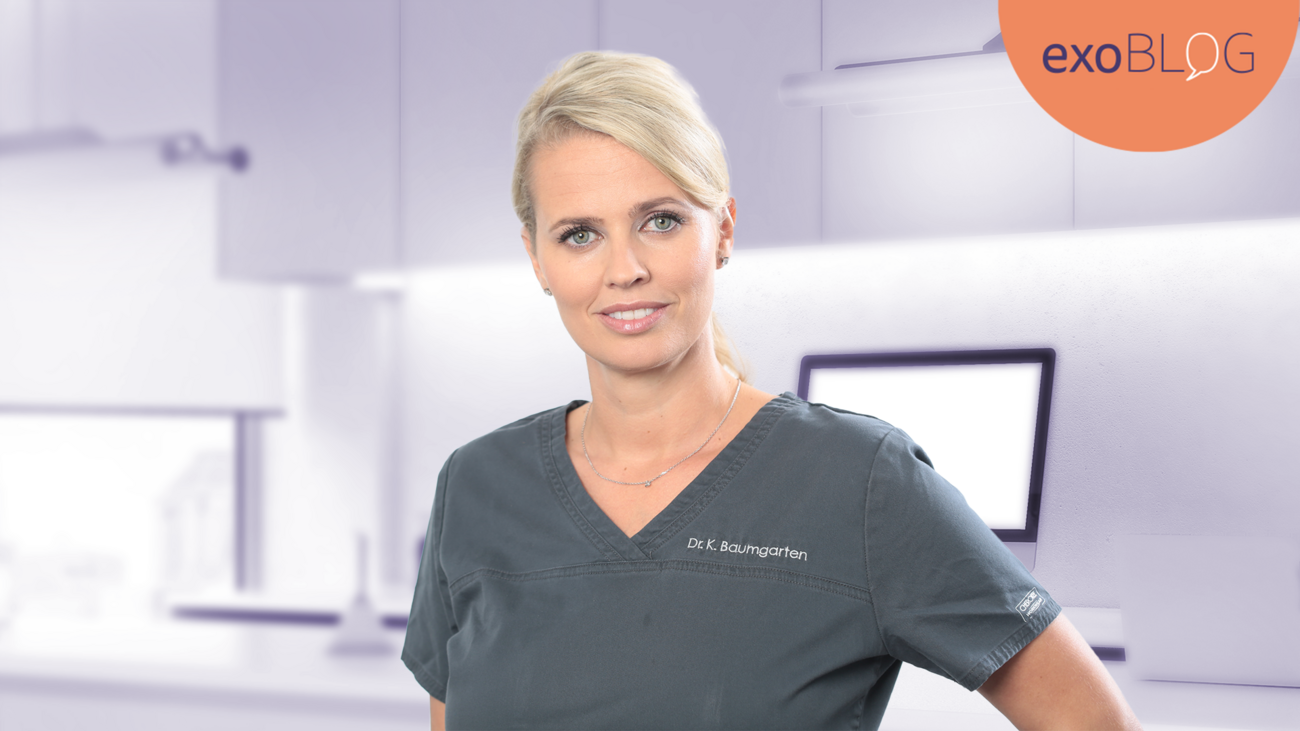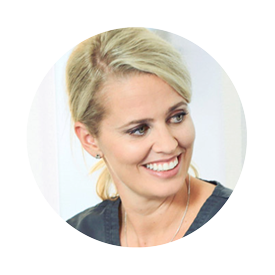Preview, plan, perfect: The power of smile design in digital dentistry
Dr. Kristina Baumgarten grew up above her parents’ dental clinic, where dentistry felt less like a career path and more like a calling. With 14 dentists in the family and a passion for both precision and esthetics, she found her niche in digital dentistry early on. Now she has her own practice that she runs with her husband, who’s an implantologist, plus two additional dentists and an in-house lab. In this exoBlog, Kristina explains how she transitioned their lab to digital and why she believes every smile deserves a “test drive.”
Q: What drew you to the dental field specifically?
A: I’m a bit artsy and love working with my hands. Dentistry is not only theoretical, but it's also crafting something, working together with the patient, creating something beautiful.
Q: Any downsides to the profession?
A: If you're self-employed, you’re responsible for staffing and tech—it’s a lot. My daughter is really into dentistry. Sometimes I think she should just get employed to avoid those stressors. Still, I love it. Every day brings something new.
Q: How has dentistry changed over your career?
A: When I started, teeth cleaning wasn’t common in Germany. It was all about fixing problems, not preventing them. It used to be just drill and fill. Then digital dentistry came in, and everything changed.
Q: What was your first experience with digital dentistry?
A: I started when I was still at university. I read this magazine about the first scanners. I told my dad that we need a scanner in our office, and he said, ‘I'm a little old for that. I don't want to get involved with the scanning.’ That was 20 years ago, but he said, ‘I trust in you, so if you want to do that and think that you need this for your career, we're going to buy a scanner.’ We bought a scanner and handled all the patients together with scanning and CAD/CAM.
Q: How has the digital workflow evolved?
A: In the beginning, I had all these wishes like to one day be able to scan the whole arch and to not need to powder the teeth when scanning. When I started digital dentistry, it was sometimes confusing and frustrating. There was a lot of trial and error, but I always had the vision that one day it would work better. Twenty years later, all my wishes have come true.
“Our workflow is more predictable now—we catch issues before starting treatment.”
Q: What was it like building your in-house digital lab?
A: We have an in-house lab with four technicians. Our lab was analog when we first introduced CAD/CAM. Now they use DentalCAD. I think implementing digital workflows was easier for us because I had already learned how they worked. If everyone’s new to it, that can be challenging.
Q: How has digital dentistry changed your relationship with your lab?
A: Since it’s our own lab, I can push new digital tools. Our workflow is more predictable now—we catch issues before starting treatment. Technicians even approve my preps while the patient is still in the chair. It reduces remakes and stress.
“I don’t know how I ever got along without the Smile Creator Module. It makes matching patient expectations so much easier.”
Q: Do you have a favorite tool within exocad software or digital dentistry?
A: I love the Smile Creator Module and using before/after visuals to study facial proportions. It’s something we never learned in university, but now it's crucial. I don’t know how I ever got along without the Smile Creator Module.
Q: How has the Smile Create Module impacted patient experience?
A: It’s all about setting realistic expectations. Patients deserve to “test drive” their treatment like they would a car. Visuals help them understand what’s possible and what’s not.
I remember when I was working at a lab, and we got a case that said the patient wanted to look like Heidi Klum. So we pulled a picture and designed based on that. But it looked horrible on the patient because she was an elderly woman who didn’t look like Heidi Klum at all. With the Smile Creator Module, we can match patient expectations so much easier.
Q: Any advice for dentists or labs new to digital workflows?
A: Don’t be afraid to find a new partner if your current one isn’t open to digital. Learn from those already experienced—it saves time in the long run.
Q: How are you using the iTero Design Suite?
A: We're just starting to integrate it. It feels like the last big missing piece in the workflow. So far, it’s easy to use and keeps more of the process in-office.
Q: What’s your favorite tooth?
A: The central incisors—they can transform a smile and a patient’s confidence.
Q: Where’s your favorite weekend getaway?
A: With our Icelandic horses. My kids compete—I just enjoy the peace. We recently attended a competition at a castle, which was beautiful.
Q: What advice would you give your younger self?
A: I never expected life to be so hard sometimes. There are detours, like dealing with my daughter’s chronic illness. But in the end, it all worked out. I’d say: keep going.
Q: One word to describe exocad?
A: Visionary. exocad stayed on course, believed in the bigger picture, and just kept going.
Owner of Zahnärzte Baumgarten in Siegen, Germany, Dr. Kristina Baumgarten specializes in cosmetic dentistry, digital workflows, and aligner therapy. She is a Certified Digital Smile Design Dentist and an international speaker on digital workflows and aligner therapy. Dr. Baumgarten also serves as Vice President for the Society of Interdisciplinary Aligner Therapy. You can follow her work on Facebook, Instagram, LinkedIn.

by Caitlan Reeg
Writer at exocad
Caitlan Reeg spends her days telling the world about the innovations her colleagues create. She’s passionate about healthcare, technology, and the ways the two interact to improve our lives. A former journalist, Caitlan has worked on staff at Dow Jones Newswires in Frankfurt and at the national public radio program Marketplace in Los Angeles.




